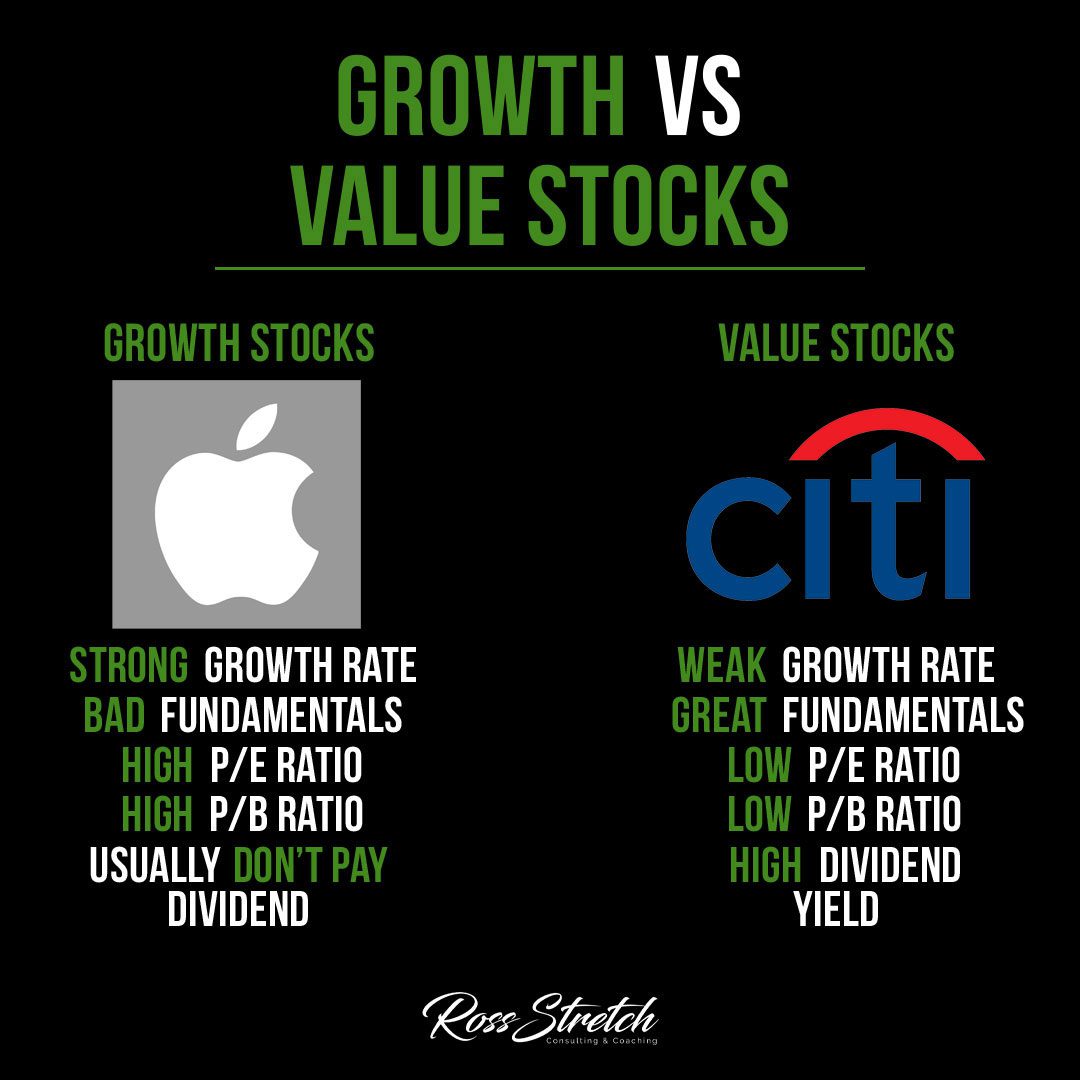Investing in stocks often means choosing between growth and value stocks. Each type has unique features, benefits, and risks. Here’s a guide to understanding growth and value stocks, so you can decide which one suits your investment strategy.
What are Growth Stocks?
Growth stocks are shares in companies expected to grow quickly. These companies reinvest their earnings to expand the business rather than pay dividends. Investors choose growth stocks hoping for high returns as the company’s value increases over time.
- Growth Rate: High growth rate, often faster than the market.
- Fundamentals: Generally considered weak. These companies prioritize growth over stability.
- P/E Ratio: High price-to-earnings (P/E) ratio, meaning investors pay a premium for future growth.
- P/B Ratio: High price-to-book (P/B) ratio, showing the stock may be overvalued based on current assets.
- Dividends: Growth stocks rarely pay dividends. Instead, they reinvest profits into the business.
Example: Companies like Apple (AAPL) are often considered growth stocks due to their focus on innovation and market expansion.
What are Value Stocks?
Value stocks are shares in companies that are stable and have strong fundamentals. These companies are often undervalued by the market, making them attractive to investors looking for steady returns.
- Growth Rate: Slower growth rate, often more stable.
- Fundamentals: Strong fundamentals with solid financial health.
- P/E Ratio: Low price-to-earnings (P/E) ratio, meaning they are priced lower compared to their earnings.
- P/B Ratio: Low price-to-book (P/B) ratio, indicating the stock is undervalued compared to its assets.
- Dividends: Value stocks typically pay high dividends, providing steady income for investors.
Example: Companies like Citi (C) are seen as value stocks, offering stability and regular dividends rather than fast growth.
Comparing Growth and Value Stocks
Here’s a quick comparison of growth and value stocks:
| Feature | Growth Stocks | Value Stocks |
|---|---|---|
| Growth Rate | Strong | Weak |
| Fundamentals | Often poor | Strong |
| P/E Ratio | High | Low |
| P/B Ratio | High | Low |
| Dividends | Rarely pay dividends | High dividend yield |
Which One Should You Choose?
Choosing between growth and value stocks depends on your investment goals:
- Growth Stocks: Best for investors seeking high returns and willing to take on more risk.
- Value Stocks: Ideal for conservative investors looking for stability and regular income.
If you prefer a balanced approach, you might invest in both types. This way, you get the potential for high returns from growth stocks and the stability of value stocks.
Conclusion
Growth and value stocks each have their own advantages. Growth stocks offer high potential returns but come with higher risks. Value stocks provide stability and steady income. Knowing the difference can help you make smart investment choices. Choose the one that matches your financial goals.


